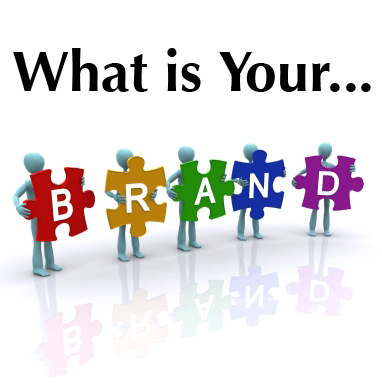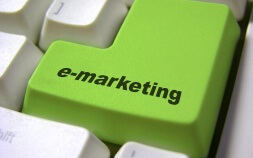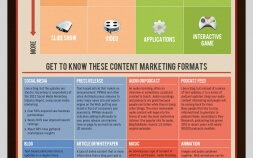As a business, your brand is the foundation of who you are and what you do. Your brand tells potential customers about you and how you can help them. It conveys to everyone what you stand for and what you’re about.
So just what is a “brand” anyway, and how do you decide on one that is right for your business? After all, it’s not just your logo, font, colors, tagline, or mission statement. It’s also who you are, what you do, and why you’re different from every other business in town.
For many new and small businesses owners, the company name and logo is the only part of their brand they give any thought to, as it’s the most visually tangible part of the brand. Although important, it shouldn’t be the starting point of your company brand, but the ending point once the intangible parts have been identified.
An excellent way to begin crafting your brand even before you have decided on your company name or logo is to sit down and do some serious thinking about the goals and mission of your business. Answering the questions “who am I?”, “who do I help?” and” how do I help them?” can begin the process of defining your brand. From there, it’s a good idea to “drill down” even further to identify your target market and to determine how and why your business can help them.
Answering these questions can help you develop your brand, around which you can then base your image and marketing strategy. Only after you have a clear idea of who and what your brand is can you begin the process of marketing to your customers.
Three steps to help you along this process are:
1. Identify your business personality. What 3 – 5 words identify your business?
2. What brands do you like? What do you like about them and what sets them apart from their competitors?
3. If your brand was a public figure, who would it be and what traits does it embody?
From here you can begin to get a feel for the core of your brand.
This same process is also very helpful when deciding how to communicate with your customers. Knowing your ideal customer is vital to your branding and marketing strategy. Questions such as:
- How old is your ideal customer?
- Is your ideal customer male or female?
- What draws your customer to your business, why does he need you?
- What emotions would your customer be experiencing during the process of needing your business?
- What benefits to the customer does your business have?
- What pain or struggle does your customer have that you can help alleviate?
Give this ideal customer, a name. Before releasing any new marketing or advertising, have a mental conversation with your customer. In this conversation, communicate your brand by appealing to your customer’s emotions, explaining the benefits and helping him avoid pain. This will help you understand and appeal to your customer.
Apple’s branding for the ipod is a great example of this: “1000 songs in your pocket.” Clear, concise, to the point. No confusion about what the product does.
Your logo is the visual representation of your business and brand. It’s main goal is to express who you are, and to differentiate your business from your competitors. Some things to keep in mind when developing your logo are the following:
- Colors. What specific colors represent your brand and how are they portrayed by your ideal customer?
- Type. What graphical image and font type represents your brand: bold, fun, clean, creative, minimal, warm, edgy, playful, modern, classic, organic, urban, professional, subtle, textured, etc?
- What sentence, or tagline, sums up your business?
All of these questions must be answered before a logo can be designed for your brand.
When it comes to your business name and tagline, two things to keep in mind are the following:
- If your business name doesn’t state what you do, your tagline should.
- If your business name is clear on what you do, your tagline should add to that, being less specific and more intriguing.
For instance, at Spears Marketing, our name and graphical logo visually and textually explains what we do. The target with a spear through it conveys both our business name and the type of marketing we engage in, targeted marketing.
Differentiation. All the brands which stand out from the crowd have branded themselves as being vastly different (superior) than their competitors. Look at Apple Computers. One of their original slogans was “Think differently.” Everyone likes to be a part of something different and unique. When you promote your business as being different than the boring old status quo of your competition, you set yourself apart, and give your customers a reason to buy from you instead.
Probably the most important element of branding is consistency. Your message has to be consistent with who you are and what you do, both online and off. This includes your logo, slogan/tagline, printed materials, website, social media, and any other type of marketing or advertising you engage in. When a potential customer sees or hears your company name, there should be no doubt in his mind who you are and what you do.
What do Amazon, Apple, Coca Cola, Google, McDonalds, Nike, and Starbucks all have in common? The answer is spectacular branding! When you see the logo of any of these companies or hear their names mentioned in conversation, you automatically know exactly who they are and what they do. There is no confusion in their branding. It is clear, concise, and consistent, no matter what medium of marketing or advertising they are engaging in.
As a business owner, your goal should be to make your own brand as consistent and recognizable as the big boys, even if only on a local level.
Remember, when in doubt about your brand, keep it simple. Less is more. Consistency is key. Always ask: Who are you? Who do you help? How do you help them? These three questions should succinctly sum up your business brand and help you to portray your business correctly to your target market, which will in turn bring in more customers and help your business grow and prosper!
What does your online branding look like? Does it follow these steps?



